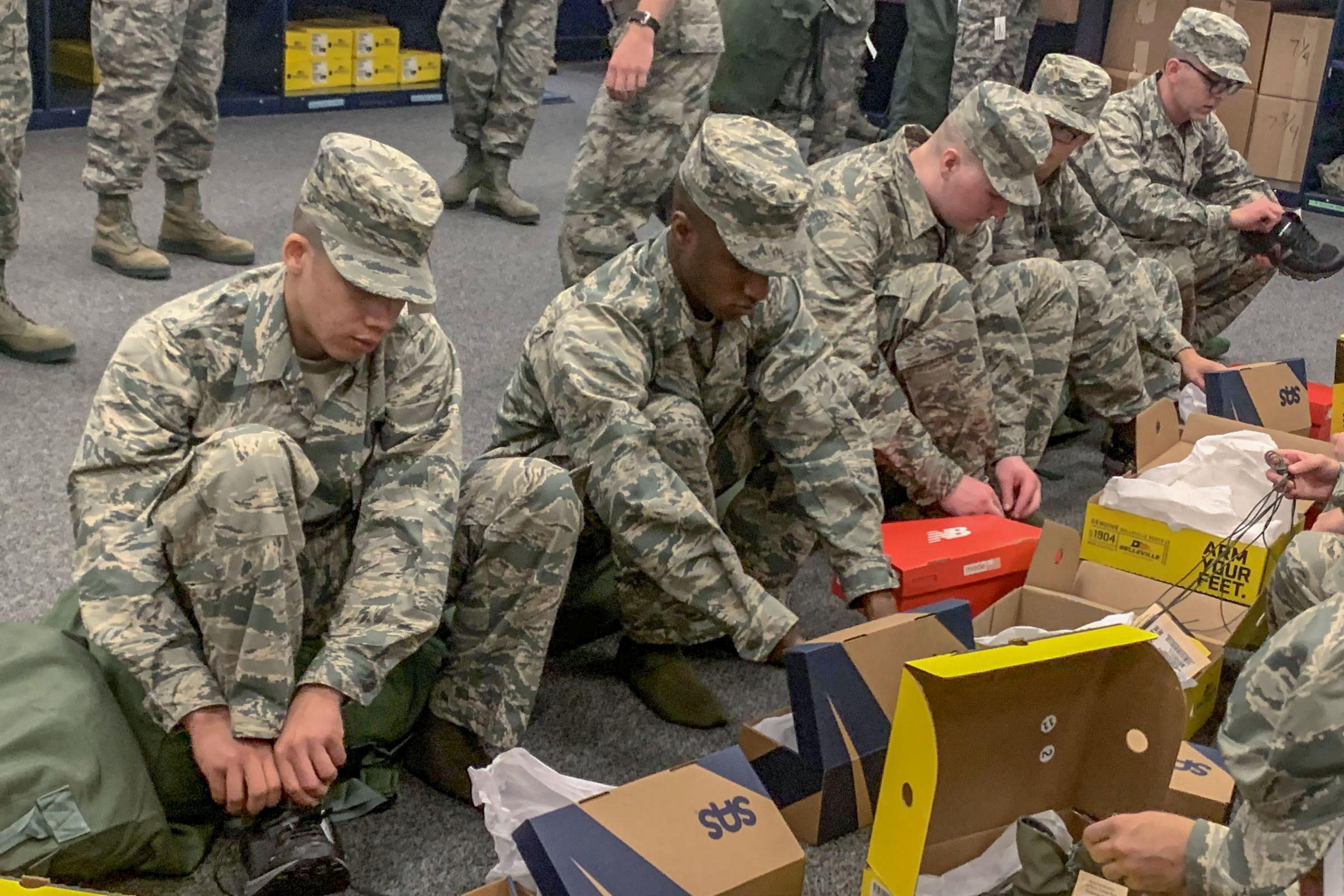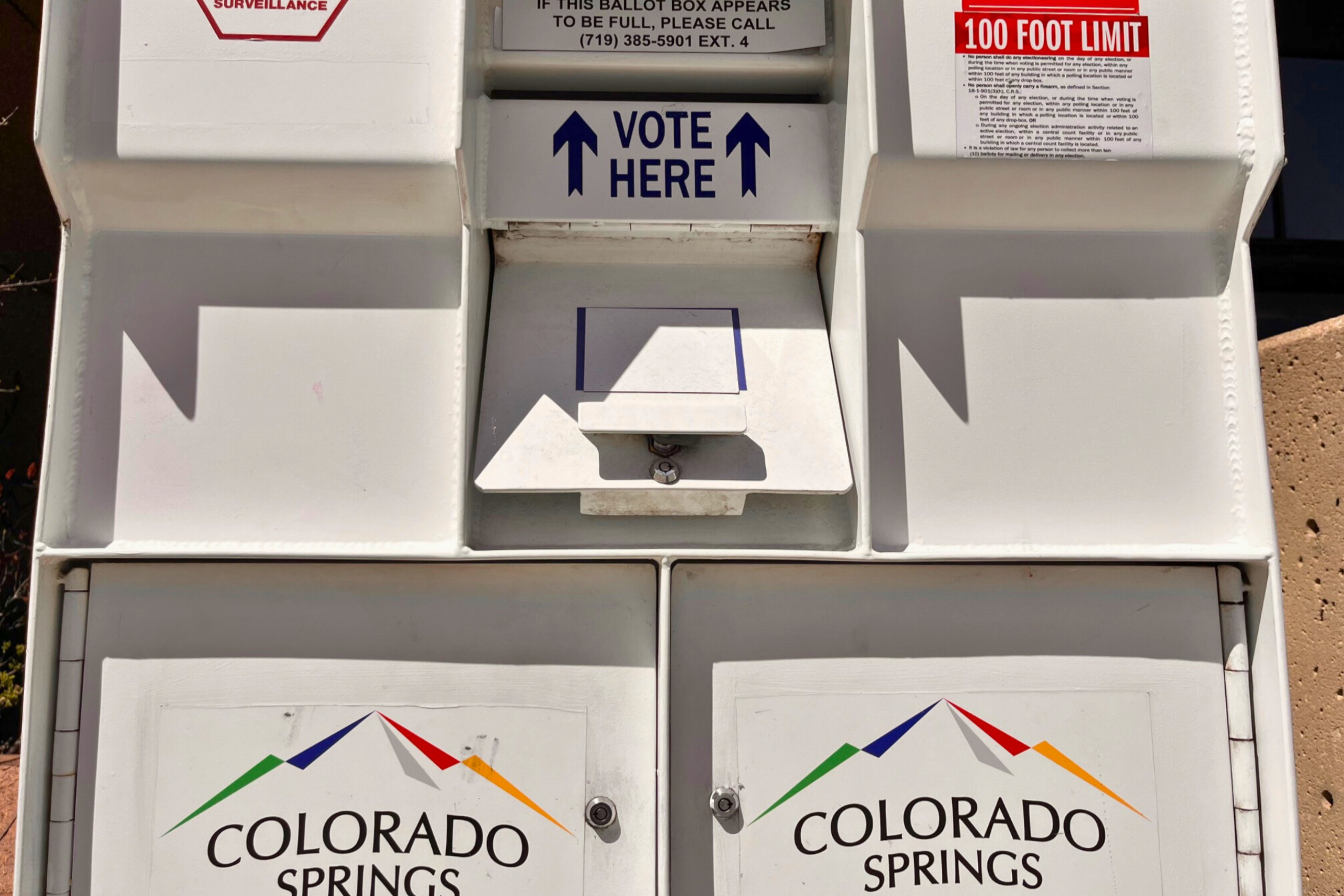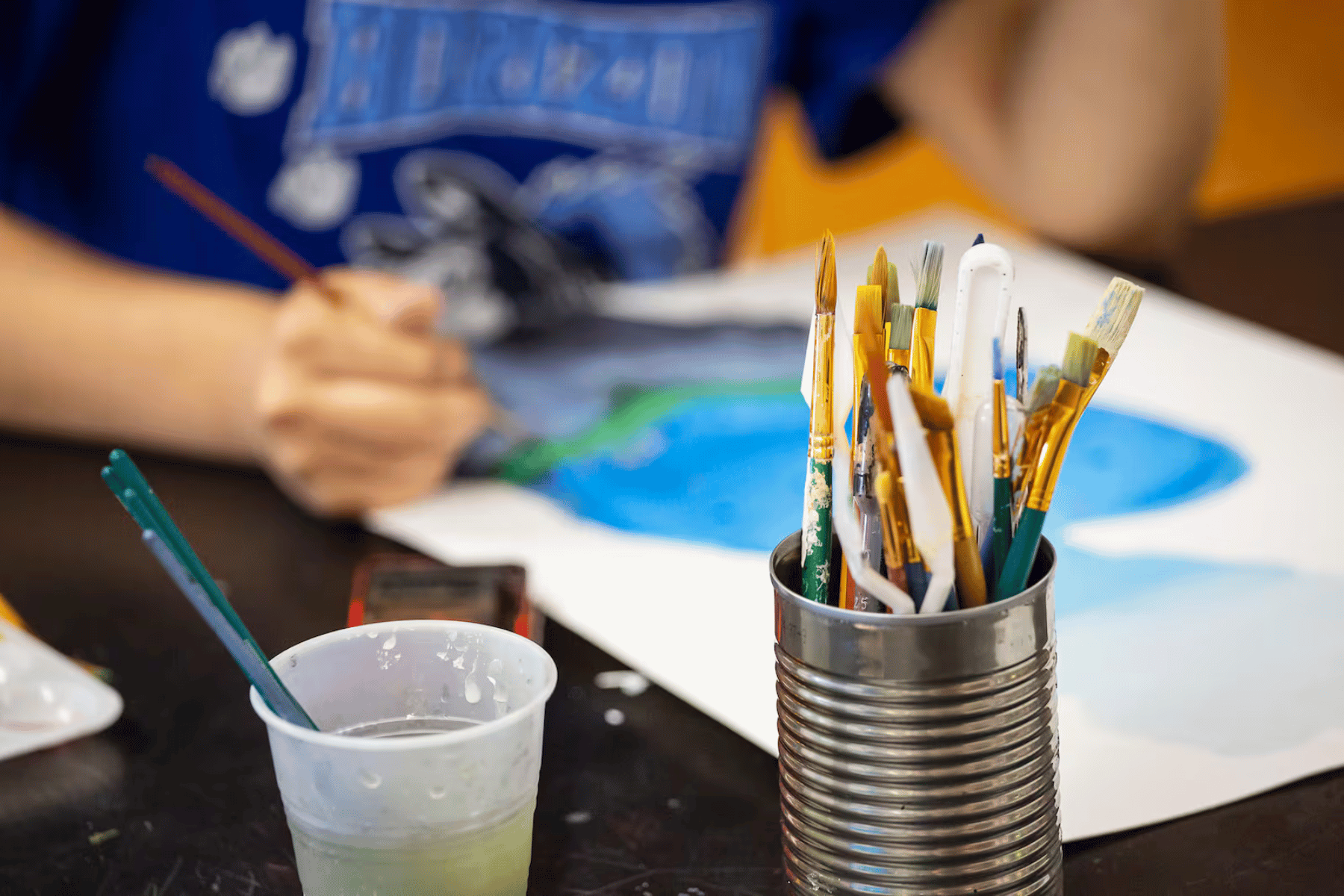

New recruits at Lackland Air Force Base in San Antonio, Texas shuffle into a room stacked high with shoe boxes. They’re in the middle of one of their first rites of passage: uniform issue. Trainers usher them around to different clothing stations to be fitted for all manner of gear. Some recruits look flustered, wearing camouflage with the tags still on it.
Vernalynne Carter, an Air Force retiree who now works at Lackland, welcomes the group into a room stacked high with shoe boxes and begins shouting requests for different pairs off the shelves. In a flurry, recruits pull tissue paper from the boxes to reveal black athletic sneakers.
Until recently, when the military issued uniforms to new recruits, they didn’t include sneakers. Instead, recruits bought their own using a clothing allowance — which allowed them to choose the brand they preferred. But a new law changed that. Sneakers became standard-issue for the first time in January after Congress passed a 2017 defense provision requiring the military to provide American-made athletic shoes to recruits directly.
It’s a controversial change that pitted the Pentagon against supporters of the Buy-American movement. Three U.S. manufacturers — New Balance, Propper Footwear, and San Antonio Shoemakers — won contracts totaling almost $80 million.
Under a 1941 law, most of the military’s uniform items must be made in the U.S.A. The Berry Amendment directs the Defense Department to give preference in procurement to domestically produced or manufactured products, including clothing and fabrics. The idea is to create American jobs and protect the supply chain in times of conflict.
“Basically they didn’t want things to be outsourced,” Carter said. “They didn’t want people to be in the American military wearing something made in China.”
But for decades, sneakers were exempt from that rule. Instead, recruits were given about $90 to buy shoes themselves. The Pentagon argued U.S. made shoes were too costly, too limited, and not durable enough to meet the military’s needs.
Around 98 percent of shoes are imported from other countries, where labor and manufacturing costs are lower. The military postponed buying American-made sneakers, claiming a lack of availability.
“I think the delay may have had to do with the fact that nobody was making it -- in terms of a performance running shoe,” said Greg Dutter of the industry trade magazine Footwear Plus. “Nobody was making it in the volume that could meet that demand.”
Congressional Involvement
But by 2016, members of Congress began to take issue with the sneaker exemption.
Some of the most vocal critics of the exemption were from New England, home of New Balance, one of America’s largest shoe manufacturers. New Balance said it did have the capacity to make enough sneakers for the military.
Other opponents of the exemption argued that the Pentagon’s buy-it-yourself approach gave recruits too much choice.
“Right now our recruits are getting injured, because they’re told to go over to the BX and buy some shoes,” said Martha McSally during a debate on the House floor. McSally, a veteran and longtime runner, was then a House member and is now a senator from Arizona.
“Most of them have no idea: Am I a pronator? A supinator? Do I have a high arch? A medium arch? They buy shoes based on price ... or buy based on which ones they think look good,” McSally said.
But there were others who defended sneaker choice during that 2016 congressional debate, including former reservist Mark Sanford, then a South Carolina congressman.
“The military has allowed cash allowances for some time because they recognized the need for personal choices in personal matters,” Sanford said. “For instance, women’s undergarments. People are allowed a personal choice in picking the undergarments that work for them. And yet, there’s nothing more personal for a new recruit than their shoes.”
With the pressure mounting, the Made-in-America provision made its way into the defense budget.
U.S. Shoemakers Supply The Military
Texas-based San Antonio Shoemakers won the largest of the three military sneaker contracts, worth about $34 million to deliver 206,000 pairs of shoes.
“It’s a significant portion of business for us,” said CEO Nancy Richardson. “By far, the majority of our business is still in commercial. But you can never feel bad about getting a contract worth that value.”
Started in 1976, SAS has long prided itself on making shoes in the U.S.A. The SAS factory now churns out hundreds of shoes each week for the military, and some end up across town at Lackland Air Force Base. Production is mostly sectioned off into a special area of the factory to ensure that foreign components don’t make their way into the process.
Richardson expressed confidence that their product, called the M1, will meet the needs of new recruits.
“Our shoe-making team especially was really excited,” Richardson said. “So the team really hustled and got the prototypes ready, then we submitted the bid.”
The Army, Coast Guard, Navy and Marines will all get American-made shoes in the coming months. A total of about 250,000 pairs are expected to be distributed to recruits every year.
This story was produced by the American Homefront Project, a public media collaboration that reports on American military life and veterans. Funding comes from the Corporation for Public Broadcasting.









